Pork highway puerto rico: A Guide to Guavate and la Ruta del Lechón
Exploring the “Pork Highways” in Puerto Rico
From the whole pig (lechón) to a smaller, simpler version of the dish (pernil), pit-roasted pork is iconic during the holiday celebrations.
There is a route for everything in Puerto Rico, and la ruta del lechón should be the top to visit. There are, in fact, three different pork highways you should consider when planning a getaway to Puerto Rico, especially around the holidays.
Why? These routes (which you’ll very soon learn the reason people dubbed them the “pork highway”) showcase one of Puerto Rico’s culinary delicacies and gastronomic heritage: spit-roasted pork. And, although you can find lechón all year round, it is an intricate part of the traditional Christmas menu.
Traditionally, lechón is a whole pig roasted over coals for several hours until it’s juicy and crispy. Keep in mind that this meat has been marinating in adobo for hours – sometimes days, to make the pork all flavorful and mouthwatering. The locally acclaimed dish emerged from the jíbaro’s menu in fiestas and evolved into the cultural delicacy that it is today.
The locally acclaimed dish emerged from the jíbaro’s menu in fiestas and evolved into the cultural delicacy that it is today.
From the whole pig (lechón) to a smaller, simpler version of the dish (pernil), spit-roasted pork is iconic during the holiday celebrations.
The towns of Naranjito, Trujillo Alto, and Cayey are known for having a bountiful of businesses lined up up the road with a great Christmas menu all year round.
Jesus Izcoa Moure Bridge in Naranjito.
The Pork Routes in Puerto Rico
Naranjito awaits
Naranjito is known for its natural beauty. You can breathe the fresh air while relishing in mesmerizing sights with lush treetops and verdant mountains. Although it is only a 40-minute drive from the SJU airport, you’ll feel like stepping into Puerto Rico’s Navidad Campesina, or countryside Christmas. You’ll find food trucks like La Criolla, Lechonera Otero, and Lechonera Naranjito’s menu include arroz con gandules (rice with pigeon peas), morcilla (blood sausage), guineos en escabeche (pickled green bananas), yuca al mojo (garlic cassava), sweet plantains, tostones, and in some cases roasted turkey. Other businesses lined up the hills of Naranjito with this type of menu and a festive ambiance are La Nueva Casita de Hiram, Lechonera Cedro Abajo, Tongo’s BBQ, Café Rústico & Asado.
Other businesses lined up the hills of Naranjito with this type of menu and a festive ambiance are La Nueva Casita de Hiram, Lechonera Cedro Abajo, Tongo’s BBQ, Café Rústico & Asado.
Before or after tasting all the exquisite food in the lechoneras of Naranjito, take some time to visit a river or a river trail. Relax by a natural pool like Charco del Cura, which legend states will make you fall in love with the town and never want to leave. Other places to visit are Lago La Plata, where you can swim and kayak or picnic around.
And, if crossing bridges is your thing, be sure to pass by the first cable-stayed bridge in the Caribbean, the Puente Atirantado de Naranjito, which connects the town to Bayamón.
Other things to do in Naranjito
Trujillo Alto brings the pork highway to the city
And, you can find Puerto Rico’s metropolitan ruta del lechón in Trujillo Alto, a cultural town known for its culinary experiences and fun festivals. There are a series of lechoneras lined up along the PR-175 in barrio Carraízo which provide a nice ambiance for both locals and visitors. If you’re a food lover, then a stop by Lechonera El Lago, Lechonera Angelito’s Place, and Lechonera La Casita de David are a must to try this Puerto Rican delicacy.
There are a series of lechoneras lined up along the PR-175 in barrio Carraízo which provide a nice ambiance for both locals and visitors. If you’re a food lover, then a stop by Lechonera El Lago, Lechonera Angelito’s Place, and Lechonera La Casita de David are a must to try this Puerto Rican delicacy.
Turn your visit to a lechonera in Trujillo Alto into a chinchorreo experience hoping from one place to another to listen to live music, trovadores competitions, artisan shopping, and more. Extend your cultural visit to la Plaza del Recreo, an open-spaced plaza that highlights beautiful landscapes and the town’s historic essence. If you enjoy history in all its forms, pass by the Puente de Trujillo across the Río Grande de Loíza, one of the two Pennsylvania Tuss bridges from the 1900s still in use on the Island. The bridge, which was replaced by a modern structure in 2004, was declared a historical monument, so get your camera ready and let history be the setting for some instagrammable moments.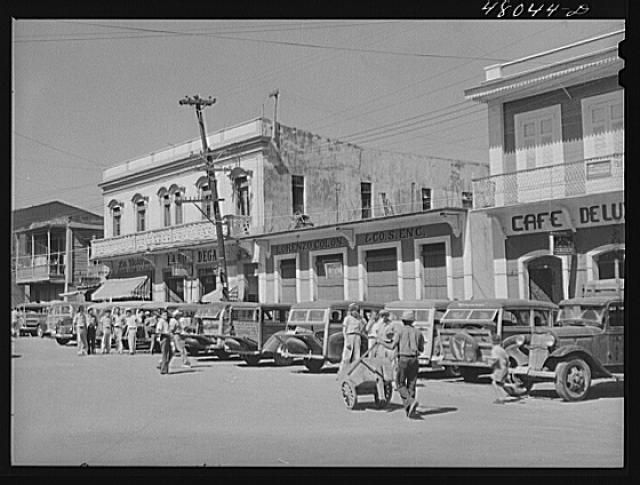 You can also visit an equestrian park for countryside-like entertainment with horse shows, live music, and food.
You can also visit an equestrian park for countryside-like entertainment with horse shows, live music, and food.
Discover more of Trujillo Alto
Savor the robust, traditional flavors of lechón on Puerto Rico’s pork highways.
Heritage and culture await in Cayey
Last but not least, there is Cayey, the most famous route for this gastronomic heritage. Have you ever heard talk of Guavate? There is a myriad of roadside eateries lined up a mile-long street. You’ll see the whole pigs roasting in skewers and the owners ready to serve you, machete in hand. Visit Lechonera Los Amigos or Café Prieto, Lechonera de Bruny, El Mojito, Doctor Lechón and both El Rancho Original and El Nuevo Rancho, as well as Lechonera los Pinos and many more.
The ruta del lechón in Cayey is an all-day chinchorreo experience in itself, but if you find yourself staying some extra time, one of the must-go-to-places is Bosque Estatal de Carite.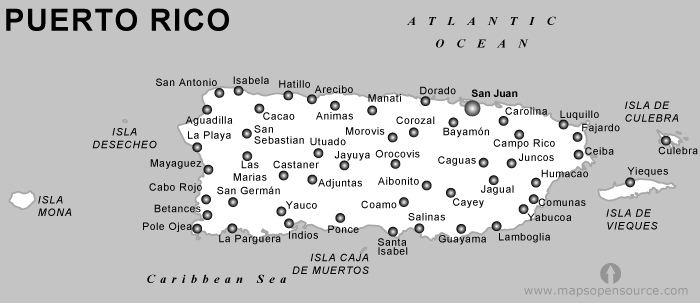 The protected reserve is home to the beloved Charco Azul, a deep-blue swimming hole inside the forest. There, you can relish in Puerto Rico’s natural wonders as you keep daydreaming about the crispy cuerito you just enjoyed. Other landmarks nearby, like the Monumento al Jíbaro (a monument that celebrates the legacy of the Island’s field workers and how it shaped part of Puerto Rico’s cultural identity), Loma de los Tres Reyes (another sculpture that represents the traditional Three Kings Day celebration), and Monumento al Veterano (a sculpture that pays homage to the heroic veterans that hail from Cayey.
The protected reserve is home to the beloved Charco Azul, a deep-blue swimming hole inside the forest. There, you can relish in Puerto Rico’s natural wonders as you keep daydreaming about the crispy cuerito you just enjoyed. Other landmarks nearby, like the Monumento al Jíbaro (a monument that celebrates the legacy of the Island’s field workers and how it shaped part of Puerto Rico’s cultural identity), Loma de los Tres Reyes (another sculpture that represents the traditional Three Kings Day celebration), and Monumento al Veterano (a sculpture that pays homage to the heroic veterans that hail from Cayey.
Explore the mountains of Cayey
Enjoy a slice of crispy, roasted pork.
Learn how to make
pernil
There is a reason that spit-roasted pork is so popular it was declared a Puerto Rican gastronomic heritage, and you can learn how to make it at home.
Believe us, once you try this way to prepare your holiday menu, you’ll forget all about turkey and ham! There are two ways to make it: lechón or pernil. While the first one refers to the whole pig a la vara (on a metal skewer) cooked slowly rotating constantly over a fire spit outside, the latter refers to the leg or shoulder of the animal, which you can cook in your oven.
While the first one refers to the whole pig a la vara (on a metal skewer) cooked slowly rotating constantly over a fire spit outside, the latter refers to the leg or shoulder of the animal, which you can cook in your oven.
So, to make things easier for you – here’s a recipe for pernil asado you can make at home.
Better start early, it takes a while to cook!
Prep time: 1 hour
Cook time: 5 hours
Lechoneras are restaurants that serve lechón and most have a cafeteria-style setup.
Ingredients:
- 8 -10 lb. pork leg or shoulder (whole, with bone)
For marinade:
- 1 tablespoon of peppercorns, crushed
- 1 tablespoon of oregano
- 4 cloves of garlic, pressed
- 1-2 lime, squeezed (optional)
- ½ cup olive oil
- Salt to taste
For meat:
- 2 tablespoons of salt
- 2 tablespoons of garlic powder
- 7-8 garlic cloves
Cooking Instructions
Mix all the ingredients for the marinade in a blender and set aside.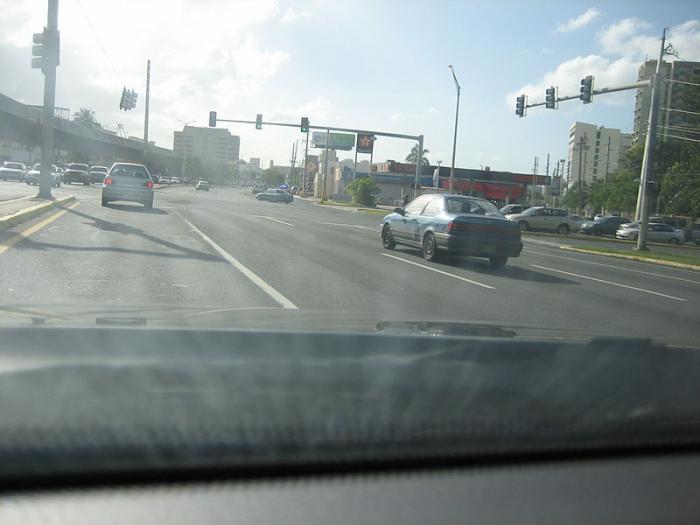 Add more salt to taste.
Add more salt to taste.
Place the pork leg or shoulder on a baking dish that can be refrigerated (and fits in your fridge). Mix the garlic powder with the salt and season the pork. Add the garlic cloves on top of the meat and let it marinate for about three hours in the fridge. Using a very sharp knife, carefully remove the meat’s fat by letting it stand on one edge. Be sure to keep the fat in one piece. Carefully make deep cuts all over the meat and season with the marinade (about two tablespoons) ensuring it penetrates well into all the cuts. This is a very important step! Put the fat on the meat to look the same as before cutting and sprinkle with salt. Cover the meat and let it marinate overnight (8 to 12 hours) in the fridge.
As you allow the pork leg or shoulder to come back to room temperature, preheat your oven to 400°F. Place it in a deep dish with the fat side up and bake for an hour. Then, reduce the temperature to 300°F and cook covered for another three hours. Uncover the pork and let it cook for another hour. Cooking time should add up to five hours or so. To make sure the meat is done, poke a fork in it and check if it falls off the bone.
Uncover the pork and let it cook for another hour. Cooking time should add up to five hours or so. To make sure the meat is done, poke a fork in it and check if it falls off the bone.
The cuerito might not be done (you’ll know because it is supposed to be crisp), so cook for an additional 15 to 20 minutes. Let it rest for about half an hour before serving. Some people cut the cuerito into squares and sprinkle it on top of the meat before serving. Others set it aside and let people “sample” on it before dinner.
Note: If using a meat thermometer, the pernil will be ready at 185° in the center.
Find other holiday recipes here
Get a taste of the Island
· Get a taste of the Island
· Get a taste of the Island
·
The parrandas navideñas are one of the favorite holiday traditions in Puerto Rico.
Holiday Traditions in Puerto Rico
Visit Puerto Rico around Christmas-time and make Puerto Rico’s holiday traditions your own.
How to Make a Puerto Rican Holiday Feast
There’s more to the fiesta than just the food.
The holiday menu in Puerto Rico includes local favorites like pernil, arroz con gandules, pasteles, tembleque, and arroz con dulce.
Five Favorite Puerto Rican Holiday Recipes
Bring the taste of Navidad into your home.
Visit the “pork highway” and savor a delicious Puerto Rican feast.
A Guide to Guavate and la Ruta del Lechón
Get the family and some friends together for a day trip to the lechoneras of Guavate.
Puerto Rican Comfort Food to Make at Home
Bring the flavors of the Island to your kitchen with these easy-to-make recipes.
Sampling locally grown coffee is a perk of traveling to Puerto Rico.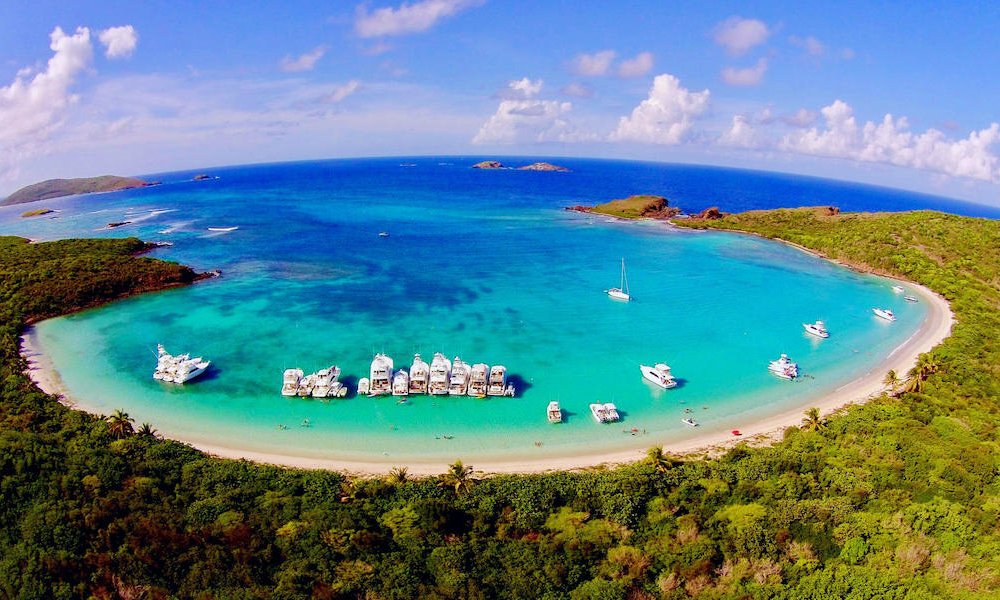
Food Trails and Culinary Adventures in Puerto Rico
Food-centric road trips around the Island — perfect for the wandering gourmand, or any hungry traveler.
Puerto Rico’s Pork Highway Is a Meat Lover’s Dream
Pork is a staple across Latin America, but few places showcase the simplistic beauty of the meat than the “Pork Highway” in Puerto Rico. While pork hasn’t been integral to Puerto Rico’s cuisine for the entirety of its history, pigs were brought by Columbus, so residents of the island have had a few centuries to perfect their pork-cooking techniques (for which we are very, very thankful).
The dozens of restaurants that make up the “La Ruta del Lechón,” or “Pork Highway,” have become a bit of a tourist excursion of late, but this doesn’t stop the locals from also continuing to congregate as the delicious menu options provide a roadside oasis. With pigs roasting on open spits, their skin crispy and gorgeously caramelized and meat that tastes like heaven, it’s not hard to see why it’s become so popular.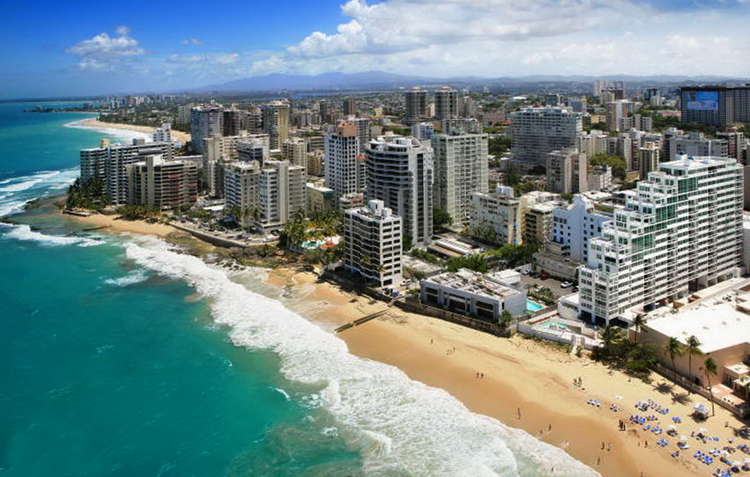
Natasha Moustache/Don Q Rum
For most meat eaters, hearing the words “Pork Highway” quickly elicits excitement and a breathless, “I can’t wait to get there.” That’s all for good reason. If you’ve got the meat sweats already, it’s OK— we won’t judge.
To get to the Pork Highway, you’ll need to head about 30 miles south of San Juan to the area known as Guavate. The Pork Highway is a couple mile stretch along Route 184.
To get to the Pork Highway, you’ll need to head about 30 miles south of San Juan to the area known as Guavate. The Pork Highway is a couple mile stretch along Route 184.
The Pork Highway used to be a hidden gem among Puerto Ricans and visitors to the island, but thanks to the Travel Channel and food and travel stars like Andrew Zimmern and the late Anthony Bourdain, it’s become a must stop for foodies checking out the island.
While there’s plenty to debate about the evils of such publicity, the Pork Highway offers an incredible array of deliciously prepared, yet simple, Puerto Rican dishes. The pigs roast for eight hours before being skillfully broken down behind the counters with machetes.
The pigs roast for eight hours before being skillfully broken down behind the counters with machetes.
Each part of the pig is used, from the succulent shredded meat to the crispy skin to the head. For adventurous eaters, snout to tail is available, including tongue, brain, or intestines.
Heaping piles of the pork are served alongside side dishes like savory smashed yuca — the root of the cassava plant — peas, crispy pork and rice, and twice-fried plantains. Pretty much everything has at least a touch of pork.
Pat Evans/The Manual
If you find yourself on the pork highway and swine isn’t your thing, the chicken and blood sausages are also among the most delightful morsels ever popped into a mouth sitting on the side of a road. Also delicious are the pasteles, a tamale-like dish made with using pork, squash, and green banana, then wrapped in banana leaves and boiled. Serve it all alongside a cold Medalla beer and the meal is one not easy to forget, despite its simplicity.
On weekdays, the Pork Highway isn’t overly busy — just a steady crowd of hungry people seated at the covered picnic tables. On weekends, however, it sounds (The Manual didn’t get to experience a weekend) like all bets are off and the party begins.
Now, to find a way to connect the barbecue trails of the American South with the Pork Highway …
Editors’ Recommendations
Small crowd this Thanksgiving? Just reach for the breasts
Of course there’s a turkey shortage — here’s what it means for your Thanksgiving dinner
This chef will completely change your perspective about food
5 easy sheet pan dinners you’ll want to make this fall
Rodney Scott’s BBQ Rubs Are The Spice Your Barbecue Game Needs
Puerto Rico: notes from an American island. End
The third part of the story about the trip to the island of Puerto Rico.
Contents:
Day 1: Arrival in Puerto Rico
Day 2: El Yunque Rainforest
Day 3 and 4: Arecibo Observatory; return home
Day 3. Route: Cerro Gordo north beach – Arecibo observatory – road through the jungle Ruta Panoramica – return to the hotel.
On the third day of our trip to Puerto Rico, we finally got to visit the Arecibo Observatory. And the weather cleared up well in the morning, only light clouds were visible in the sky. The island seemed to have been in anxious expectation all these days, “whether a hurricane will shy away”, and when the danger passed, it shook itself, starting to live a familiar, resort life. The day was supposed to be long, it was necessary to get to Arecibo in the central part of the island, and still have time to return back, so we were already on our feet at 7 in the morning.
As usual, we had breakfast on the terrace on the 1st floor of the hotel, without paying according to tradition.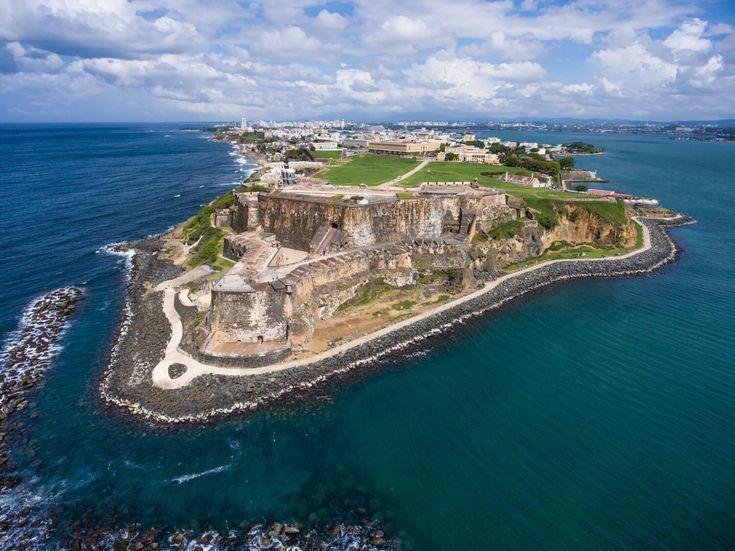 All our expenses were recorded on the room number; The account was meant to be paid off at checkout. The good thing is that you don’t have to leave a tip anywhere, and it wasn’t expected. Through San Juan we headed west on Highway 22 along the north coast of the island. Frequent tolls ($0.50 to $1.75) ensured decent pavement.
All our expenses were recorded on the room number; The account was meant to be paid off at checkout. The good thing is that you don’t have to leave a tip anywhere, and it wasn’t expected. Through San Juan we headed west on Highway 22 along the north coast of the island. Frequent tolls ($0.50 to $1.75) ensured decent pavement.
There was no traffic in the morning, and neither were the police, but there were often vendors on the roadsides. Having bought already habitual coco frio , they saw something new at a nearby seller. For just $1, a villager gave away weighty bunches of some exotic fruit, most of all resembling bunches of huge green grapes in their shells. We were not sure if we needed it at all, so we bought just one portion to try. And how wrong we were! If it were my will, I would have got a whole jar of this Sea grape. Until now, Hawaiian cherry has been my go-to for absolute taste, with a light vanilla flavor and creamy cake texture. But here the cheremoyyas had to make room.
Most of all, sea grape looked like brown Asian lychees, inside there is a large stone, and around it is a pink-white substance with the taste of mashed apple-apricot puree. It’s very hard to describe the taste of exotic fruits using the usual comparisons 🙂 It’s very funny to peel sea grapes: you had to bite it a little around the perimeter, after which the upper part of the peel was easily removed, like half of the shell from an egg, and the tastiest remained in the second half, and your hands were clean . The brush was killed entirely right behind the wheel, without stopping anywhere.
From Highway 22 we turned vertically north, straight towards the Atlantic, and soon, passing plantations of something similar to bananas, we drove to Cerro Gordo beach. The beach is paid, $ 3 per person, but super clean, equipped with changing rooms, showers (not only outdoors, but also indoors), vending machines for various food and drink.
The attractiveness of this beach is that not far from the coast there was a small coral reef. Those. you can not just swim bored, but look at tropical fish. At some point, they even noticed a group of divers crawling out from behind the reef in black hydras that made them look like Japanese ninjas. After resting for about an hour under the bright sun, which is gaining momentum, we headed for Arecibo (66 km).
The observatory is hidden in the mountains, in the central part of Puerto Rico; there is no direct route from Highway #22, you will have to travel through a series of small, rural roads. But since the signs to “Arecibo” are well placed, this does not cause any inconvenience. Along with these signs, when approaching the borders of the observatory, others went – with a crossed out picture of a cell phone. In the area of 2 km from the dish, the use of radiotelephones is prohibited. There are guards at the entrance, but they don’t search, they just look carefully. You can park at the bottom of the hill, after which there is a rather steep climb for about a kilometer to the info center and the telescope.
You can park at the bottom of the hill, after which there is a rather steep climb for about a kilometer to the info center and the telescope.
For all those who love to look into the night sky, visiting Arecibo is a must-have number when traveling in Puerto Rico. The observatory has the largest radio telescope on Earth, and has been featured in blockbusters such as “X-files”, “Contact”, and James Bond’s “Golden Eye”. It is very interesting to revisit these films after having been “on nature”. The plate, 305 meters in diameter, was built in the early 60s from 38,000 perforated aluminum panels. It is the most sensitive instrument of its kind, and can pick up radio signals as far as 10 billion light-years away, i.e. at the very edge of the universe. And, accordingly, it can recognize call signs that have come down to us from the past.
Arecibo is constantly used by scientists in many countries, especially in the study of pulsars (neutron stars), and in more detailed mapping of the planets on the sky map. And also, the telescope plays a significant role in the search for extraterrestrial civilizations SETI (Search for Extra-Terrestrial Intelligence). So far, no signals from green men have been recorded. At least that’s what they write in official sources 🙂 But scientists do not lose hope, saying: “We have studied only one leaf in the whole jungle sea.”
And also, the telescope plays a significant role in the search for extraterrestrial civilizations SETI (Search for Extra-Terrestrial Intelligence). So far, no signals from green men have been recorded. At least that’s what they write in official sources 🙂 But scientists do not lose hope, saying: “We have studied only one leaf in the whole jungle sea.”
For ordinary visitors to the observatory, the entrance ticket will cost $5. Inside the information center there are interactive displays that tell in an accessible language about the dynamics of the universe, and how the radio telescope works. It is quite possible to skip a 20-minute film on the topic, and immediately go to the observation deck, located exactly above the plate. I won’t be surprised that the first thought when seeing this miracle in reality will be: “Wow!” Really impressive size.
Having put on a long lens (or you can use the telescopes placed along the edge of the site), we saw that the aluminum panels, which seemed pristine white in the photographs, were not even clean at all, covered with dust and small debris.
A spherical contraption, the height of a 6-storey building, was floating above the plate, connected by a flexible pipe-tunnel through which experts walked. The contraption turned out to be the Gregorian Reflector (named after 17th-century mathematician James Gregory), built in 1997th year for $ 25 million, and designed to improve the performance of the telescope, helping it to be guided more accurately.
The observation deck was located in the very sun, there was not the slightest chance to hide in the shade. After spending about half an hour at scorching 40 ° C, they could no longer withstand the power of the tropical sun, and headed for the exit from the observatory.
They planned to return to the hotel not by their own footsteps, but by the road with the euphonious name Ruta Panoramica, which was recommended in several books. You can get to it along the 10th highway, still under construction at that time, but oddly enough – open. Apparently, the builders were guided by the idea that in a sober mind no one will stick their head in a 10-ku, but not in a sober mind – that’s where they are dear 🙂 Darwin selection in action, so to speak.
Apparently, the builders were guided by the idea that in a sober mind no one will stick their head in a 10-ku, but not in a sober mind – that’s where they are dear 🙂 Darwin selection in action, so to speak.
The highway was a continuous zigzag, steeper than the Hawaiian road to Hana, with which I so love to compare different crazy highways. The locals drove along it slowly, slowly, the road was not inferior even to large cars. After a couple of tens of kilometers, an exit sign to R. Panoramica appeared. On many maps, this road is marked in green, which means “scenic road”. It stretches across the entire island of Puerto Rico in a series of mountain stretches.
It was raining. The jungle rose up to the side of the road in a solid wall, only occasionally diverging to the sides, which made it possible to cast a glance at the distant hills. The monotonous chirping of a frog was wedged into the noise of a running engine, as soon as the windows were rolled down; and nothing else disturbed the familiar landscape. Yes, just the usual. Although we were in Puerto Rico for the first time, such views were not new to us. And in Mexico, and in Belize, and even more so in Costa Rica, there are at least a dime a dozen similar roads, and no one calls them “panoramic”. Maybe R. Panoramica is more impressive in other areas, but we were a bit disappointed, to be honest, misled by overly enthusiastic book reviews.
Yes, just the usual. Although we were in Puerto Rico for the first time, such views were not new to us. And in Mexico, and in Belize, and even more so in Costa Rica, there are at least a dime a dozen similar roads, and no one calls them “panoramic”. Maybe R. Panoramica is more impressive in other areas, but we were a bit disappointed, to be honest, misled by overly enthusiastic book reviews.
As we approached the east coast, there were villages with roadside restaurants where bikers came. Soon there were so many of them that they easily outweighed the number of ordinary passenger cars on the road. Frequent “miradores” departed from the roadside – observation platforms with good views of the surrounding jungle. In general, it became clear that this road is a kind of local active / social recreation, a weekend route for the average Puerto Rican.
At dusk we reached the 30 transverse highway and headed north to Liquillo. On Sunday evening, many shops and even supermarkets were closed. We dined again at our hotel restaurant, after which we sat on the beach for a long, long time, tasting the local wine, stocked up in advance. Hurricane “Felix” in just 9 hours turned from the 2nd category to the 5th, continuing to atrocity in the vicinity of Yucatan.
On Sunday evening, many shops and even supermarkets were closed. We dined again at our hotel restaurant, after which we sat on the beach for a long, long time, tasting the local wine, stocked up in advance. Hurricane “Felix” in just 9 hours turned from the 2nd category to the 5th, continuing to atrocity in the vicinity of Yucatan.
Day 4. Itinerary: check out from the hotel – walk through Old San Juan – departure home.
The mini vacation was coming to an end. All morning we swam in the Atlantic, where it was cool to enter at first, and then we didn’t want to get out at all. There was no one on the beach, which could not but rejoice; thus the entire blue-green surface of the water was in our undivided use. We had breakfast on the veranda, blown by a light breeze from the ocean. They checked out of the hotel around 11 am, paying an additional $100 for food for all days; turned out to be very profitable. The flight to Houston was leaving at 4:30 pm, so it was time to do something locally specific like seeing Old San Juan in the daylight.
To be honest, both of us don’t really like looking at all sorts of historical ruins and architectural monuments of the past. It is much more interesting to swim along the river with crocodiles, ride donkeys, or photohunt hummingbirds 🙂 But to fill a pause on holidays, this type of activity will do.
The Old Town was crowded. Crowds carrying banners roamed the streets; people would periodically begin to shout out something rhythmic, from which I caught only one phrase: “We need the truth!”, but repeated countless times.
Campaign cars, hung with loudspeakers, cruised in dense traffic, filling the breaks in the chants with new slogans. The police were visible, invisible, at every meter; but the general situation did not smell of aggression, everything happened in a rather civilized manner.
Having parked the car in the same garage as on the first day, we decided to go around the embankment of the famous city wall La Muralla, which securely surrounds the city in a ring.
There was no shadow on the embankment even next to the wall, because it was bent inward with its upper part, which made it completely impregnable. The sun heated the stone pavement already over 40°C, and the expected easy walk turned into a real test for us.
After a while, a huge gate in the wall, La Puerta de San Juan, was passed, one of the three remaining to enter the city.
The black walls of the fort were crowned with pretty turrets, located at regular intervals, and in some places covered with green bindweed.
The turrets used to house cannons, welcoming everyone in San Juan Bay. Now, Puerto Rican couples like to retire in them 🙂
Despite the sweltering heat, they still walked entirely along the eastern part of the wall, ending in a dead end and impregnable walls of El Morro Fort (16th century).
We returned to the gates soaking wet, and if it wasn’t for the air-conditioned cafe that soon turned up, Puerto Rico would hardly have let us go in a sane state and more or less complete health. And so, in just an hour, they completely came to their senses, drinking a coconut smoothie and beer.
And so, in just an hour, they completely came to their senses, drinking a coconut smoothie and beer.
At three o’clock in the afternoon we returned the car to “Hertz”, after which we took the shuttle to the airport without any problems. On one of the forums for travelers, we were warned that often huge traffic jams form at the San Juan airport, and only for departures. And all because of the cruisers, for whom Puerto Rico is the final point of navigation, after which they return home by plane. So, if you really happened to cross paths with this audience at the airport, you don’t need to crowd with them in endless lines. Check-in for the flight and security can be easily done in the neighboring wing, which belongs to the international terminal. Very good advice, which we kept in our heads just in case, but we didn’t have to use it, because. The airport terminal was empty at the time.
The rest of the time before the flight was spent in one of the bars, eating pina coladas. And, apparently, they tasted so much that they almost missed the departure time. In 20 minutes they rushed to the gate; it turned out that the final call had already been announced. The stewardesses looked rather askance in our direction, but they let us on the plane. But we were not the last; 5 minutes before departure, another couple flew into the cabin, from a transplant. Drunk pina coladas and the heat of the day did their job, the entire flight passed in half-asleep and vain attempts to concentrate on the film being shown. After 4 hours, we arrived safely in Houston, completing a short vacation.
And, apparently, they tasted so much that they almost missed the departure time. In 20 minutes they rushed to the gate; it turned out that the final call had already been announced. The stewardesses looked rather askance in our direction, but they let us on the plane. But we were not the last; 5 minutes before departure, another couple flew into the cabin, from a transplant. Drunk pina coladas and the heat of the day did their job, the entire flight passed in half-asleep and vain attempts to concentrate on the film being shown. After 4 hours, we arrived safely in Houston, completing a short vacation.
I cannot say that Puerto Rico is very interesting for what is called “experienced” travelers, especially those who have been to other Central American countries and dominions. As for nature, in Costa Rica it is much more attractive, and even with a diverse wildlife, in contrast to. We liked the ruins and ancient ruins more in Belize and in the Mexican Yucatan; reefs with tropical fish are more beautiful in Hawaii, etc.